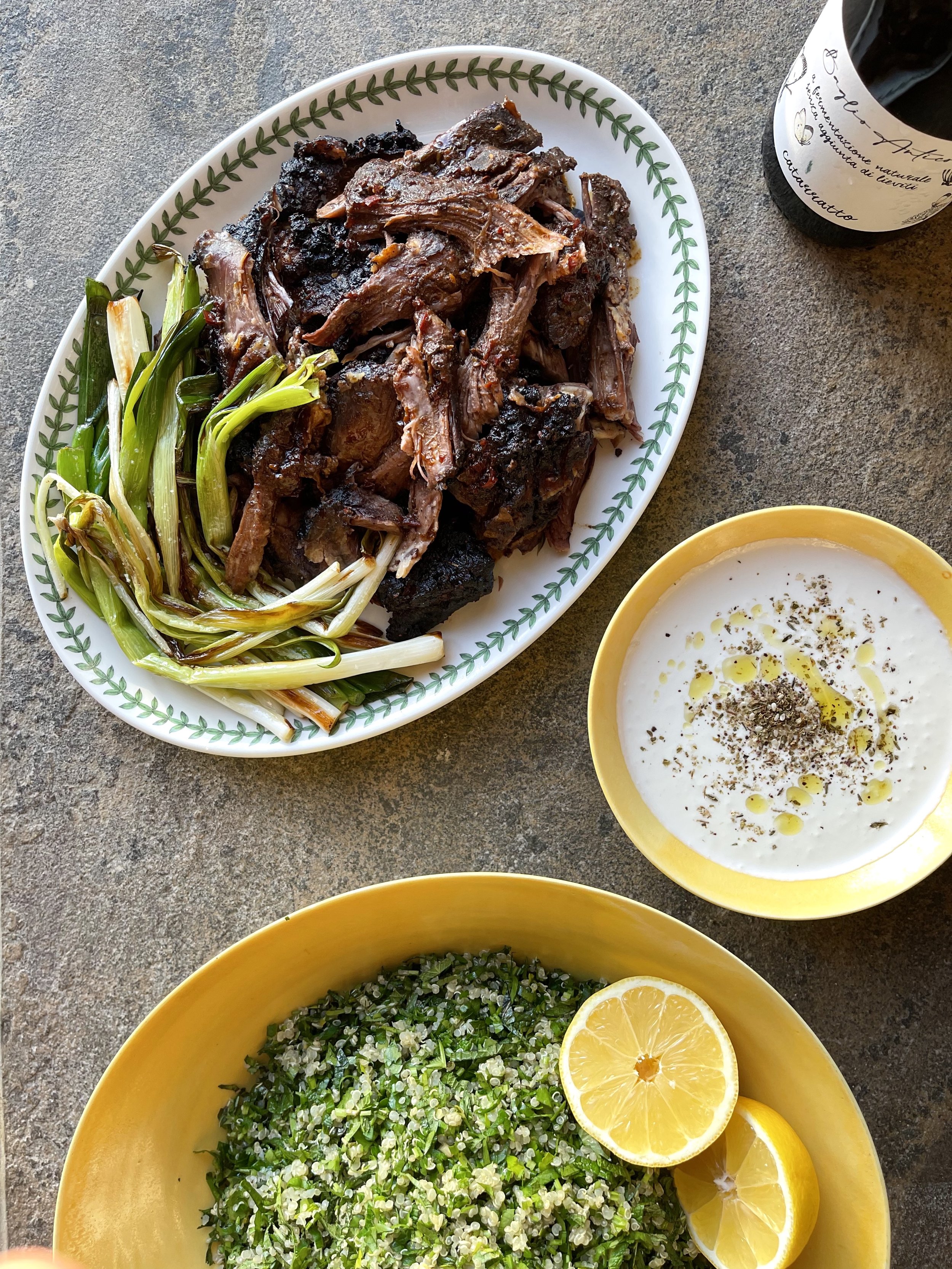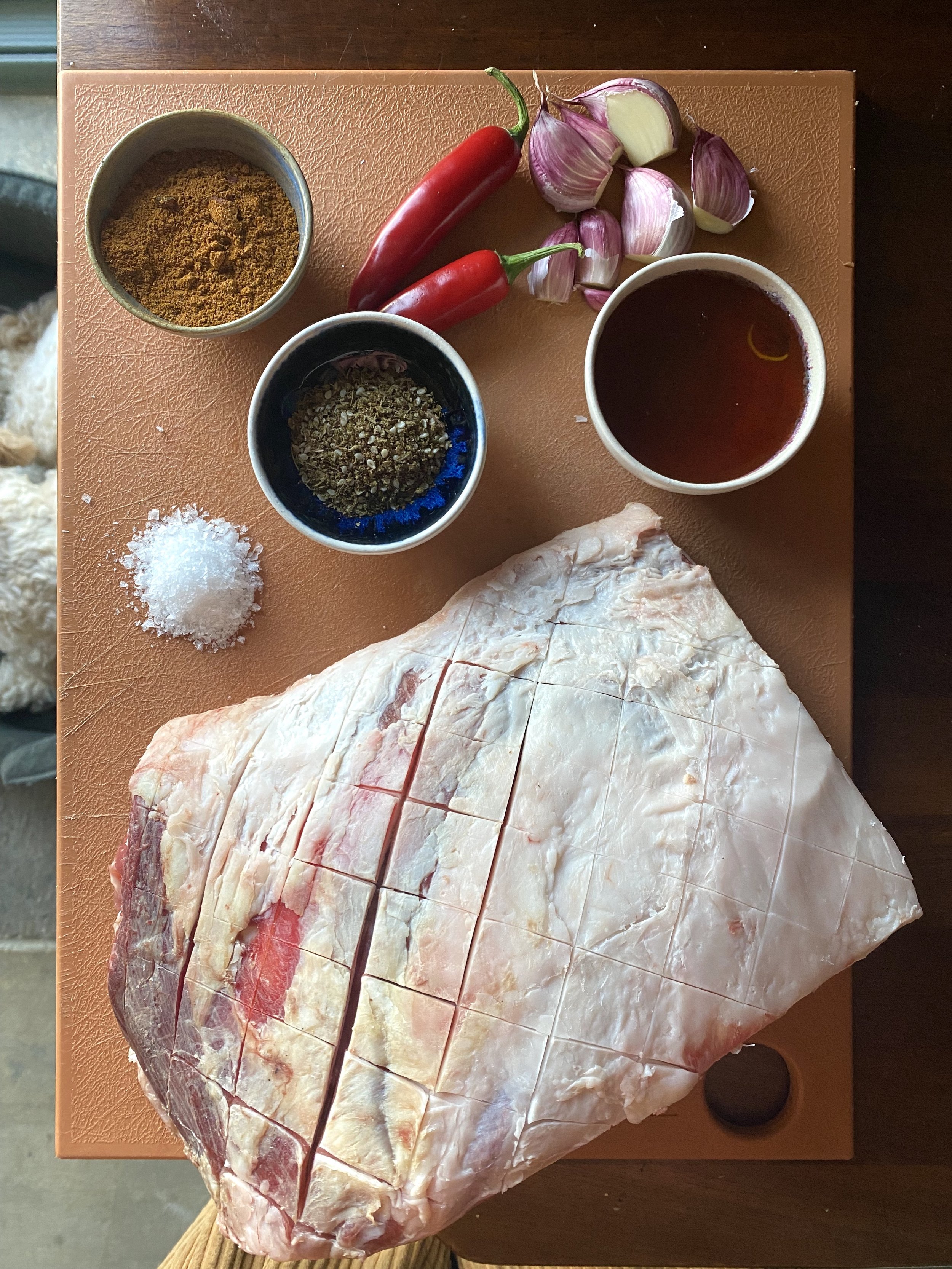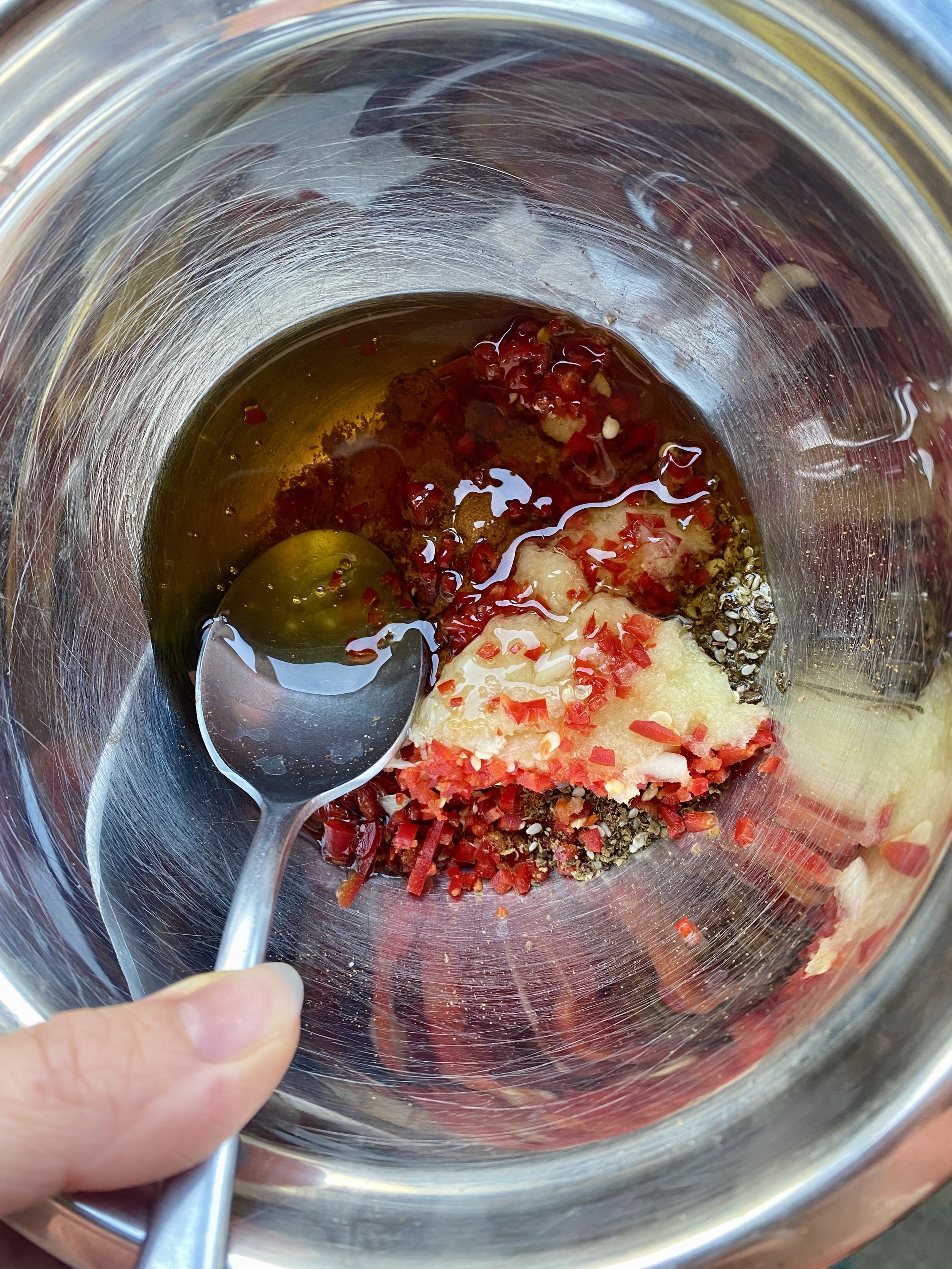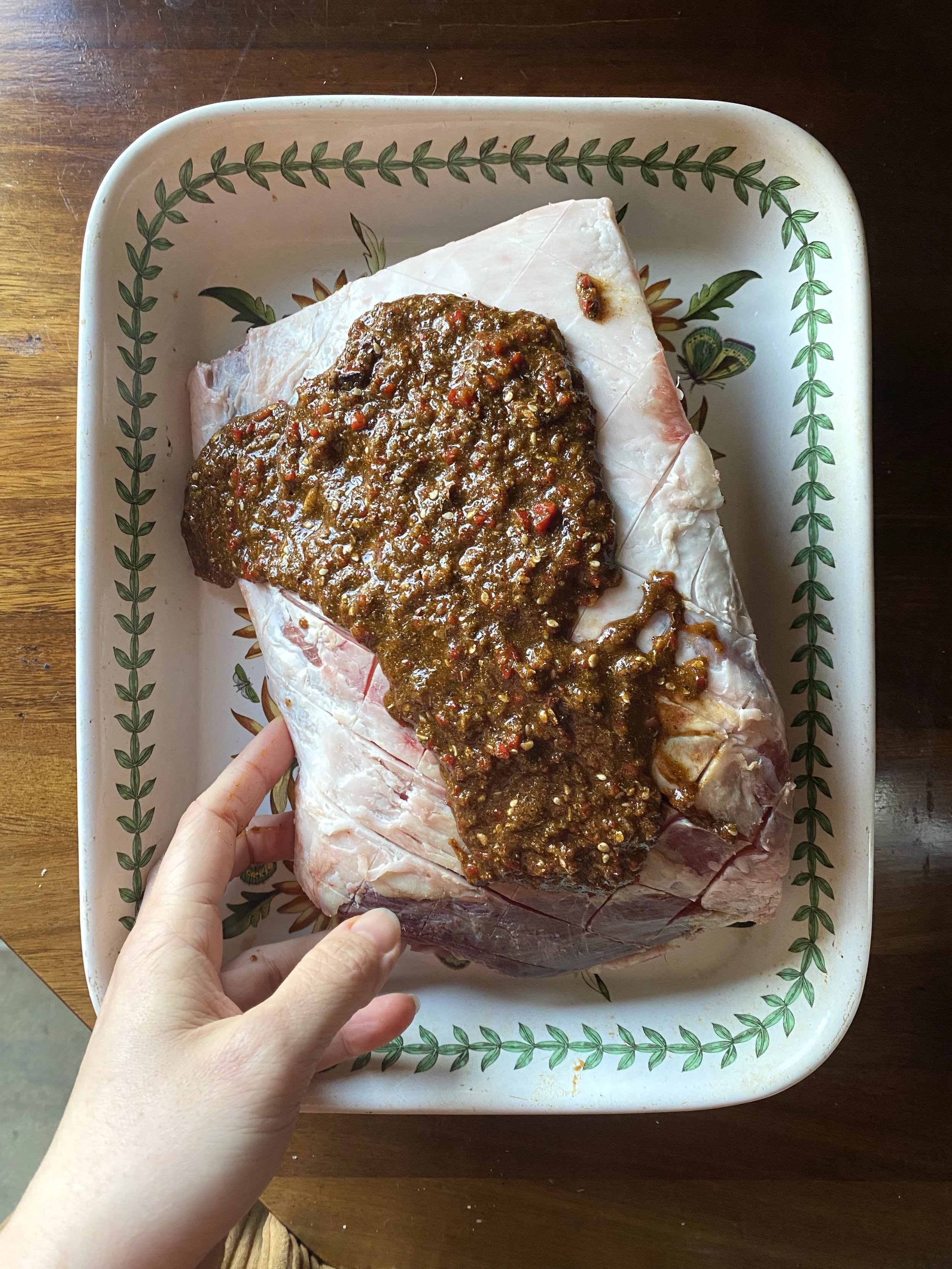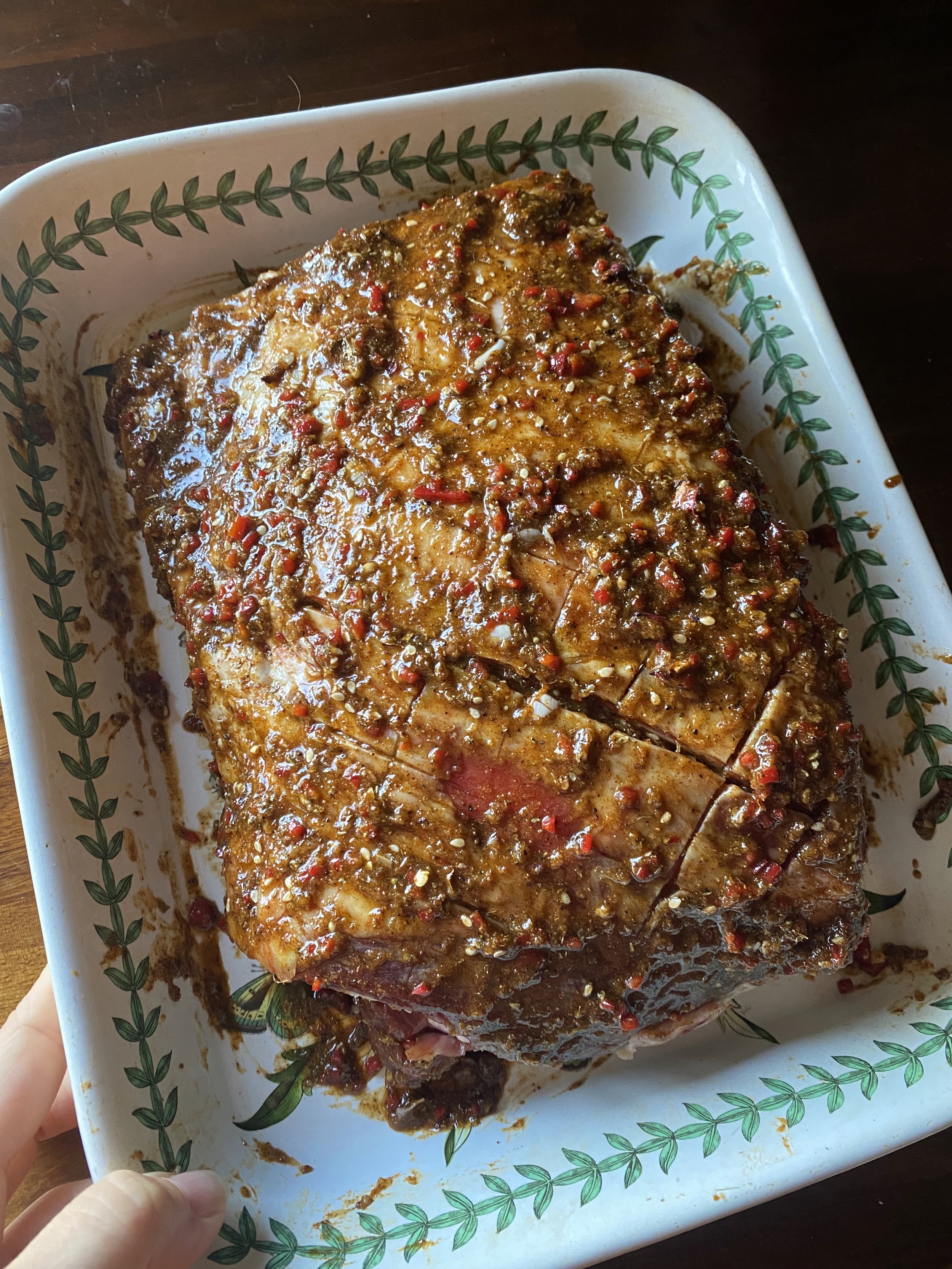Slow-roasted mutton, with ras-el-hanout, honey & garlic
Roast lamb is almost synonymous Spring feasting; it’s ubiquitous around Easter, but perhaps it’s time to try something new, and by new we mean old/er - enter mutton!
For reference, ‘lamb’ refers to meat which comes from a sheep that’s less than 1 year old, ‘hogget’ is meat from an animal between 1 - 2 years, and ‘mutton’ comes from a sheep that’s over 2 years old. As one may expert, mutton is darker and richer in flavour, and requires even lower and slower cooking to tenderise the meat.
Mutton is much stronger in flavour than lamb, and can therefore handle being paired with more powerful flavours brilliantly. Here, we’ve rubbed it with heady Moroccan spices, rich golden honey and some heat and punch from red chillies and garlic.
Once slow-roasted, sticky and charred, these fantastically deep, sweet and complex flavours are cut through with a tangy feta yogurt sauce, and served with a zingy herby tabbouleh that’s bursting with parsley, mint, coriander and lemon.
And the wine pairing?
We suggest a skin-contact wine that’s clean, zippy and structured such as an orange wine from Italy - a Sicilian Catarratto would be a great choice.
Orange wines are so called because of their colour, and this is achieved by allowing the wine to macerate on the crushed white grape skins for a few days at the very start of the winemaking process. This imparts gentle tannins into the wine, as well as a faint, pleasantly bitter edge. The tannic structure make an orange Cattarato a great match for charred, sweet-smoky-spicy mutton; and the wine’s fresh citrus flavours helps to cut through the rich meat too.
Prep time: 30 mins
Cooking time: 5 hours
This recipe serves 4-6.
Ingredients for the mutton.
1.2 - 2 kg of blade of mutton
6 cloves garlic
2 red chillies
2 tbsp honey
2 tbsp olive oil
2 heaped tbsp ras-el-hanout
1 heaped tbsp za’atar
2 tsp sea salt
Ingredients for feta yogurt.
1 block feta
½ cup natural yogurt
½ lemon, juice only
Method.
Remove the mutton from the fridge and allow it to come to room temperature. Preheat the oven to 140 degrees.
Trim away excess fat or tough skin. Place the joint ‘fat-side-up’ in a suitably sized/snug roasting tray and score the fat in a criss-cross fashion.
Mince the garlic and finely dice the chilli, then in a small mixing bowl whisk together the garlic, chilli, honey, olive oil, ras-el-hanout, za’atar and sea salt to make a thick slurry.
Pour and pat this roasting marinade all over the scored mutton, then place in the preheated oven for a total of 4-5 hours with the following adjustments along the way.
Keep the mutton uncovered for the first 2 hours.
After 2 hours add a splash of water to the roasting tray and cover with tin foil. Return to the oven for a further 2 hours.
After 2 hours - now 4 hrs in total - remove the tin foil. Press the mutton with a fork to see how its texture is getting on; it will likely need another hour.
Return the mutton, uncovered, for a final hour. If things are looking dry add a generous splash of water.
After 5 hours in total remove the mutton from the oven and allow it to rest under loosely covered tin foil.
Drain away any excess fat if you wish, then shred the mutton and toss it in its own dark roasting juices to coat and moisten. It can be served straight from the roasting tray if you wish - this one is all about flavour!
While the mutton is roasting you have time to make your side dishes and feta yogurt. A herby tabouleh is a brilliant accompaniment.
For the feta yogurt, whizz up the feta with ½ cup natural yoghurt and the juice of ½ lemon until smooth. Pop in a serving bowl and hold in the fridge until needed.
Roasted spring onions and simple steamed greens dressed lightly with olive oil make lovely accompaniments too. Enjoy!


